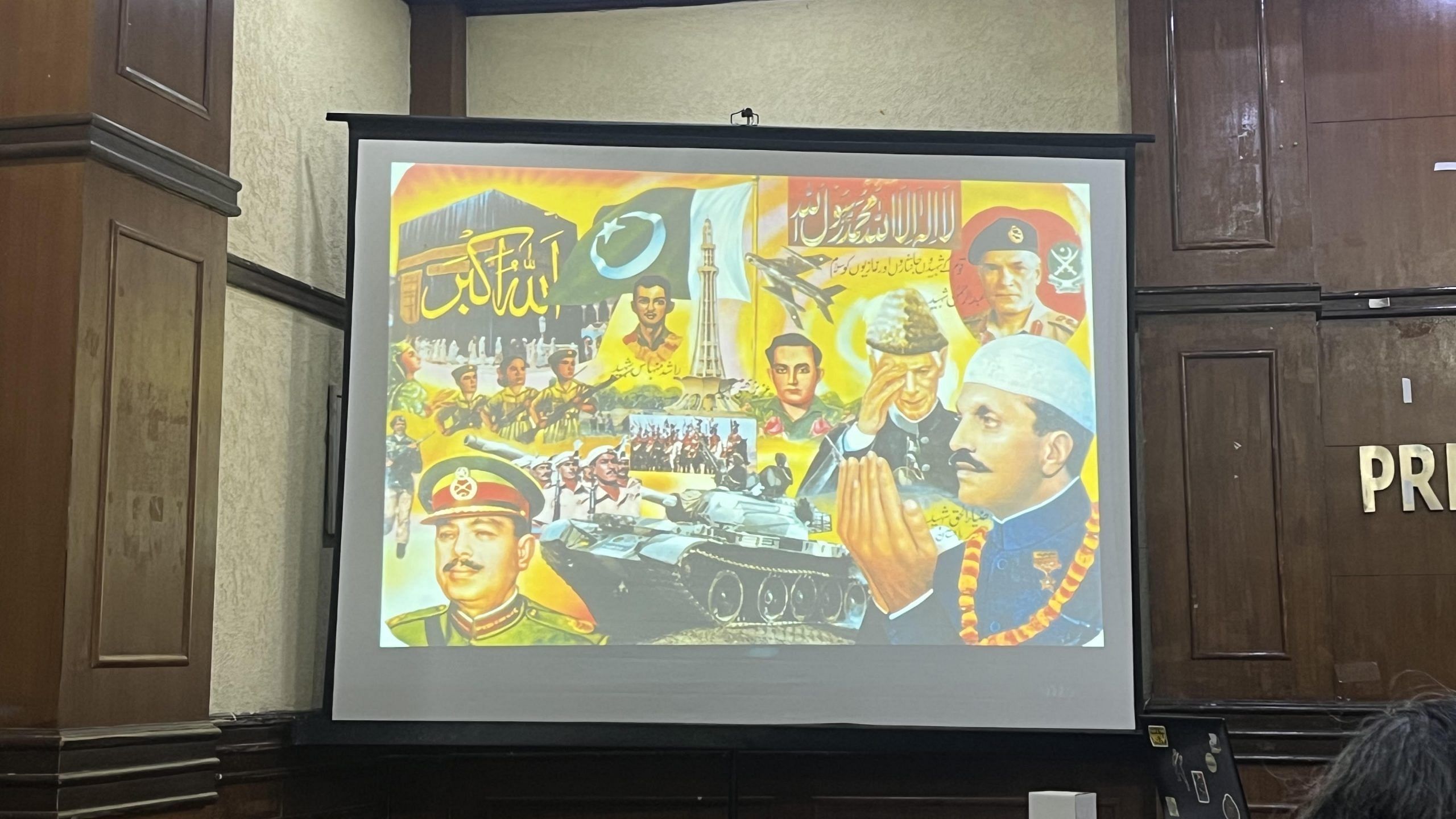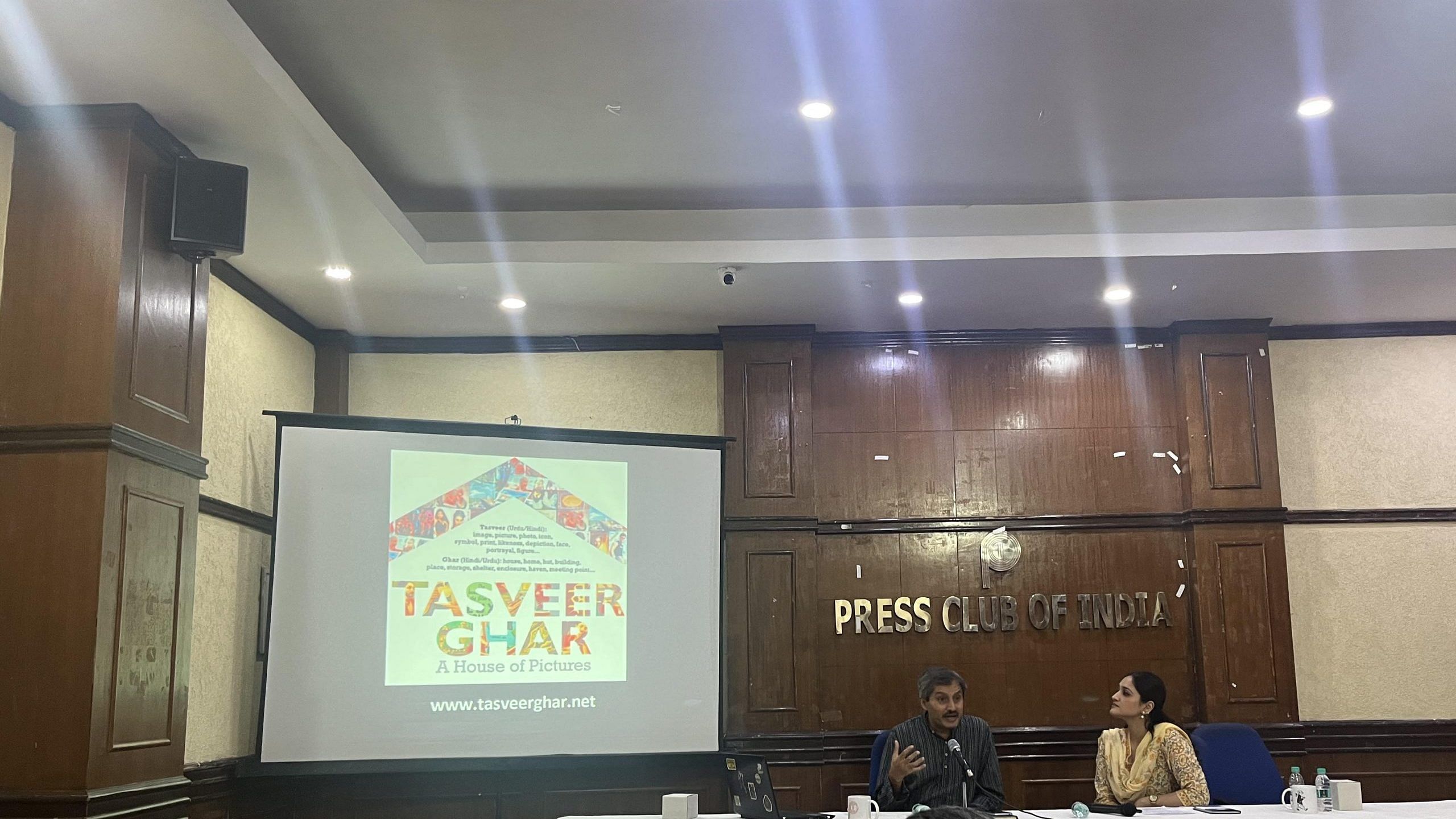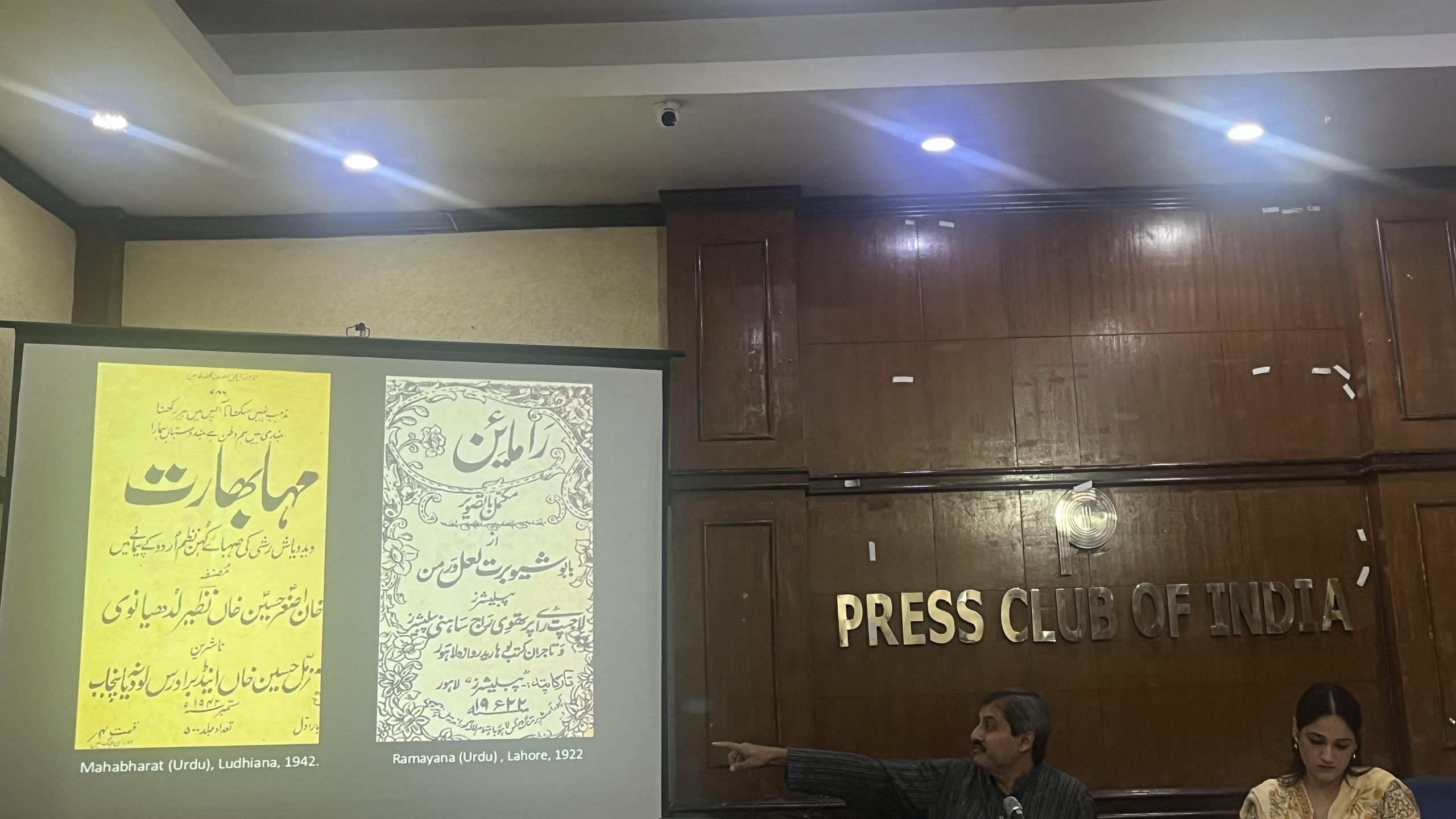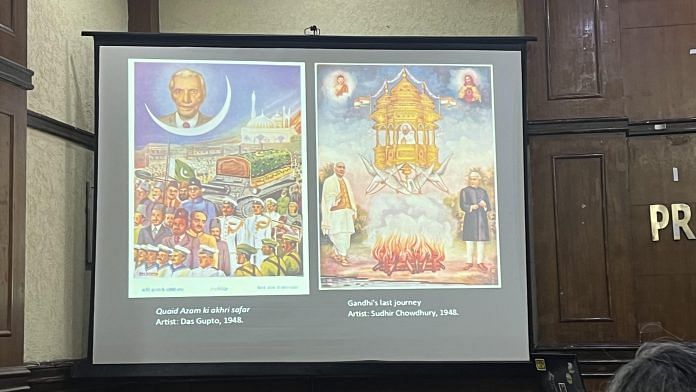New Delhi: Two nations separated at birth, two posters of their founding figures Gandhi and Jinnah, and their final funerary journeys in 1948.
The posters are a study in contrasts and similarity. Seen together, they are a portrait of each other’s intimate enemies.
A painstaking collection of mass-produced calendars, posters, and greeting cards by cultural archivist and filmmaker Yousuf Saeed was recently shown during a discussion in New Delhi, offering a glimpse into what constituted pre-Independence public art and consciousness in India and Pakistan.
Among the posters shown at the Press Club of India last Saturday were the cover pages of Ramayana and Mahabharata written in Urdu, and a printed collage featuring Mecca, Jinnah, Zia-ul-Haq, the Pakistani flag, and a tank. These are not merely reminders of the intertwined history of India and Pakistan. They also represent a visual art form, which Saeed covers in his new book, Partitioning Bazaar Art: Popular Visual Culture of India and Pakistan Around 1947.

At the event, Saeed showed how ephemeral objects – wall calendars, posters, and greeting cards – can serve as repositories of public history. While the Partition is often associated with images of migrants, dead bodies, and overcrowded trains, the discussion featuring Saeed and oral historian Aanchal Malhotra opened a window to a unique visual culture of that time. It provided a glimpse into an art form that was embedded in everyday items, yet possessed the capacity to convey complex ideas, document history, and mould a nation’s identity.
Also read: Satire on Indira Gandhi, a play where Delhi was the stage: NSD chief Amal Allana’s picks
History stored in disposable art
In a room full of journalists, Saeed delivered a captivating 30-minute slideshow presentation that examined pre-independence India, the freedom struggle, and the Partition through ordinary artifacts, far removed from the category of ‘high art’.
“We call it popular art,” Saeed said, explaining that ‘Bazaar Art’ diverges from conventional, contemporary art found in galleries, museums, “or in rich people’s homes”. “This art is mass-duplicated or mass-produced, and it has a social life where [all] people interact with it, [not] just the elite,” the filmmaker said, explaining that such art could be in the form of calendars, decorative items, advertisement posters, greeting cards, and packaging materials.
Saeed recalled how the idea to document this ‘disposable’ art came to him in 2005-06 when he was collecting Islamic posters. This led to the creation of an online archival project, Tasveer Ghar: A House of Pictures, which documents varied items—cinema posters, picture postcards, advertisements, calendars, matchboxes—from different periods. Saeed is the project director of Tasveer Ghar, while Christiane Brosius, a professor at Heidelberg Centre for Transcultural Studies, and Sumathi Ramaswamy, a professor at Duke University, serve as project coordinators.

He delved into the origins of Bazaar Art, which can be traced back to Raja Ravi Varma, a prominent artist of the late 19th and early 20th centuries. Varma’s distinctive Western-style paintings, known for their use of light, shadow, and perspective, revolutionised Indian art. He notably painted portraits of British officers, Indian nobility, and Hindu deities, sparking controversy by introducing human models into depictions of gods and goddesses. His innovative approach paved the way for mass production and the birth of coloured posters in India.
“The impact of Raja Ravi Varma’s style was so significant that all artists started portraying gods and goddess in the same manner,” Saeed noted.
Also read: Delhi’s Partition Museum remembers pain of separation—through artefacts, images, personal items
Farewell of the founding fathers
Two of the most striking images shared during the evening were posters depicting the last journey of Muhammad Ali Jinnah and the final rites of Gandhi, both of which occurred in 1948. These juxtaposed images showed how the two leaders were perceived by their countrymen.
Jinnah’s funeral procession featured high-ranking officials and military personnel, set against a backdrop of religious symbols, including a mosque and the moon. In contrast, the poster depicting Gandhi’s last rites portrayed him ascending to heaven inside a golden monument, carried aloft by swans, in the presence of Jawaharlal Nehru and Sardar Patel, his successors. Tiny drawings of Buddha and Jesus were also included in the poster.
Saeed revealed that both posters were created by Indian artists in India. “You can see how the Indian publishing industry is still producing these kinds of images,” he pointed out.
He emphasised that the Partition had disrupted the vibrant network of publishing that had been thriving across India. Saeed displayed the cover page of an Urdu version of the Ramayana published in Lahore in 1922 and the Mahabharata published in Ludhiana in 1942. The partition significantly impacted the world of popular art, and publishers had to relocate. He cited the example of India’s oldest Hindu magazine, Mayapuri, which was established by publishers who had previously operated in Lahore under the name Arorbans Press.

The filmmaker noted that posters and advertisements served as a means of disseminating information to those who couldn’t read. He highlighted how the Swadeshi movement in the early 20th century was able to gain momentum because of visual materials such as posters featuring Gandhi’s charkha, khadi, and spindle.
“The posters were a very potent medium through which the idea of nationalism could be projected,” Saeed remarked, likening them to the TV and internet of that era.
Also read: How unique ‘Bazaar paintings’ fuelled trade in colonial India
Missing Ambedkar, scientific temperament
Following Saeed’s presentation, Aanchal Malhotra engaged him in a discussion about the cultural values embedded in these items and the imagination of Indian artists of that era. Soon, journalists got the chance to pose questions. Among the enquiries was the absence of B.R. Ambedkar in the posters and whether there were posters depicting a scientific temperament in India.
Saeed explained that the Indian leader, who belonged to the Dalit community, became more visible after 1947, as prior to that, Congress leaders like Gandhi, Nehru, and Patel were “very dominant”. The display of scientific temper is also inferred, rather than overt, with depictions of the Green Revolution and gadgets that symbolise the “idea of modernity but not science,” according to the filmmaker.
Saeed said that a different kind of aesthetics shaped the imagination, cultural narratives, and historical narratives of India before the advent of cameras and now, AI technology. He noted that these artists put in considerable effort, knowing that their artwork would ultimately be discarded.
“They were items (calendars, posters) to decorate the houses… so the ultimate beauty had to be put in those art. It was the brief that was given to the artist,” he said.
(Edited by Prashant)



